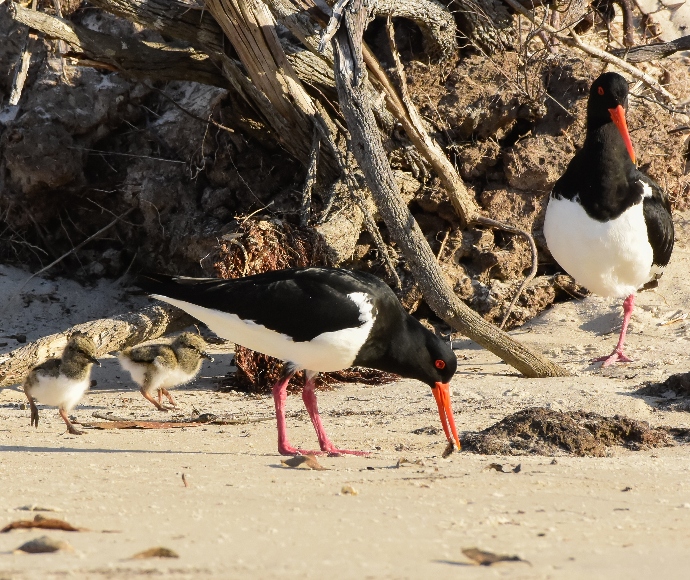Two newly hatched, fluffy pied oystercatcher chicks, no bigger than golf balls, were spotted at a beach in the Jervis Bay area last week, the first shorebird chicks to hatch this season on the south coast.

³Ô¹ÏÍøÕ¾ Parks and Wildlife Service (NPWS) shorebird ranger, Anna Muller, says the one-day-old chicks were spotted by a local volunteer group with the very first feathered family portraits captured by local photographer Chris Grounds.
‘These tiny chicks are a real reminder to the community of the need to share the shore this summer,’ Ms Muller said.
‘While small in size, their hatching is big news for the endangered pied oystercatcher population, with only around 40 fledglings recorded on the New South Wales south coast last season.
‘With more and more birds nesting from now until the end of summer, it’s vital that people give nesting shorebirds space.
‘Not only are chicks well camouflaged in the sand, but parents can be very unsettled by disturbance from beachgoers and dogs and are known to abandon nests.
‘While our group of dedicated NPWS shorebird volunteers will be out all spring and summer to record and monitor nests, there are also simple steps the community can do to keep these birds safe.
‘Look out for bird nesting signs or fenced-off nesting areas on the beach, stay well clear of these areas and give the parent birds plenty of space.
‘Walk dogs only on designated dog-friendly beaches and always keep them on a leash if shorebirds are present, especially during the spring/summer nesting season.
‘Chicks are mobile and don’t necessarily stay within fenced nesting areas. Stick to the wet sand to avoid accidentally stepping on a chick.
‘Sharing the shore is really a very simple thing we can all do that will have a direct impact on the survival of these threatened species that also call the south coast home,’ Ms Muller said.
Each summer endangered pied oystercatchers, little terns and critically endangered hooded plovers lay eggs in shallow scraped-out nests on beaches and sandy shores in New South Wales.







